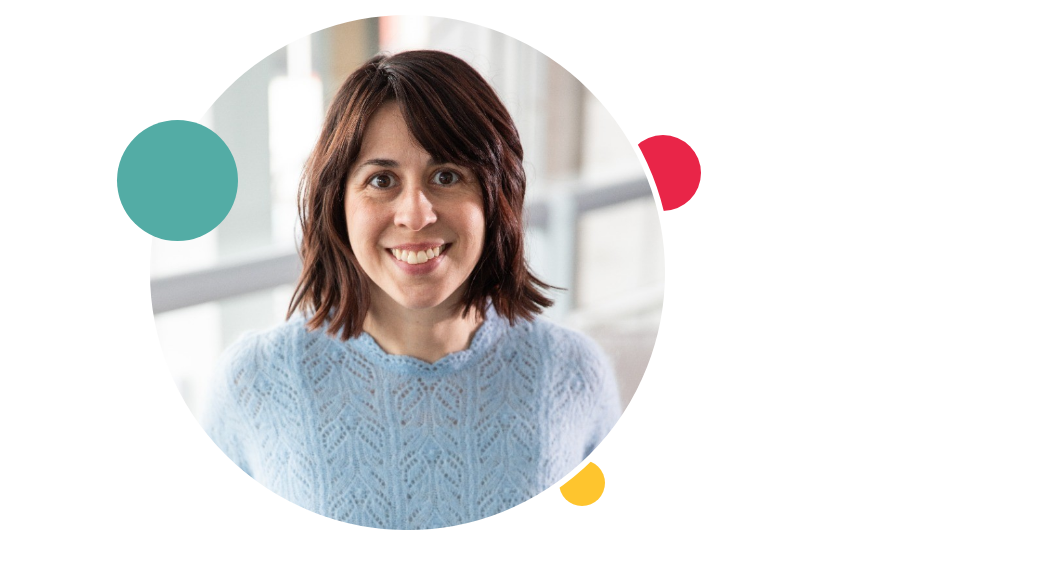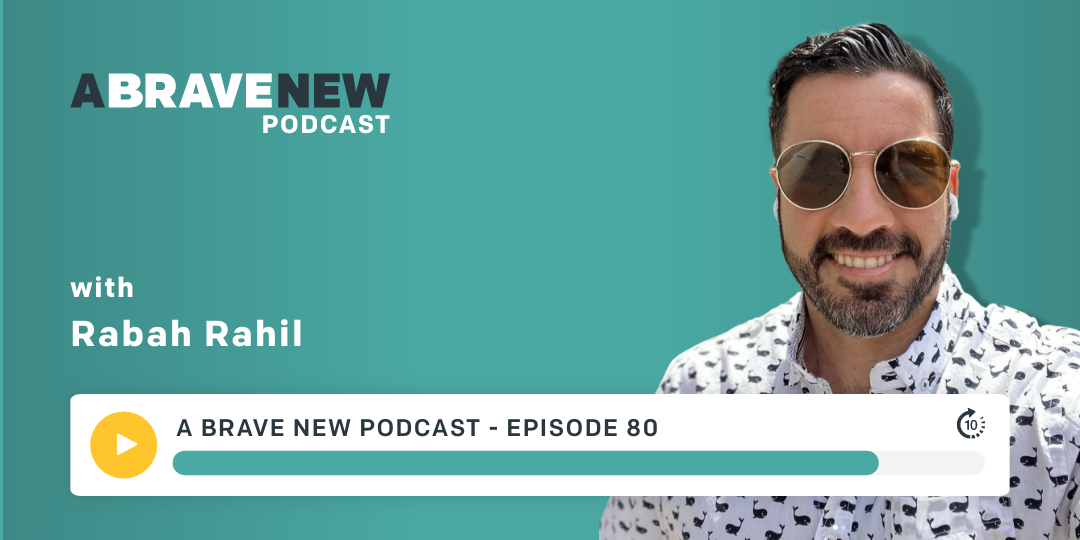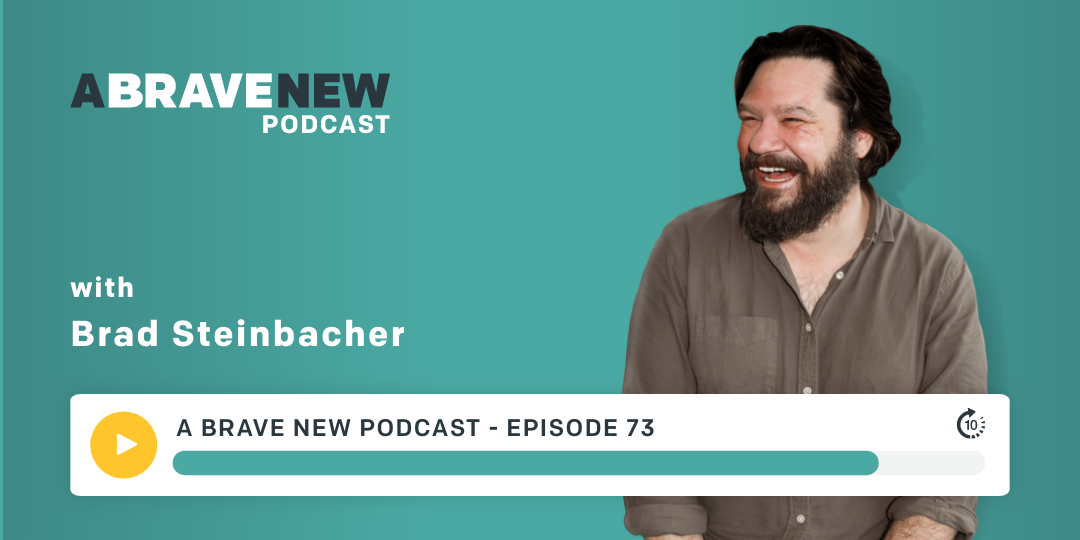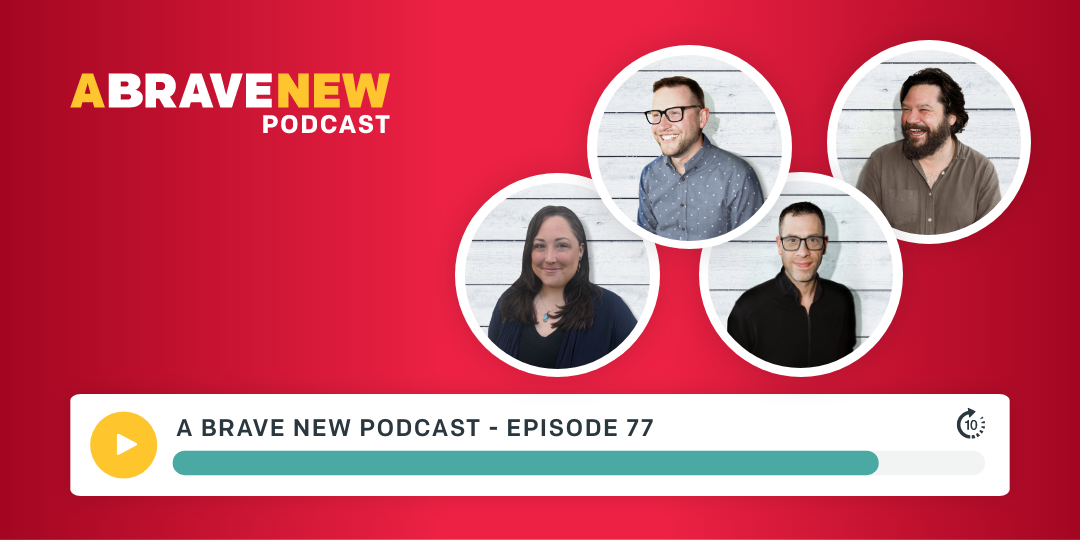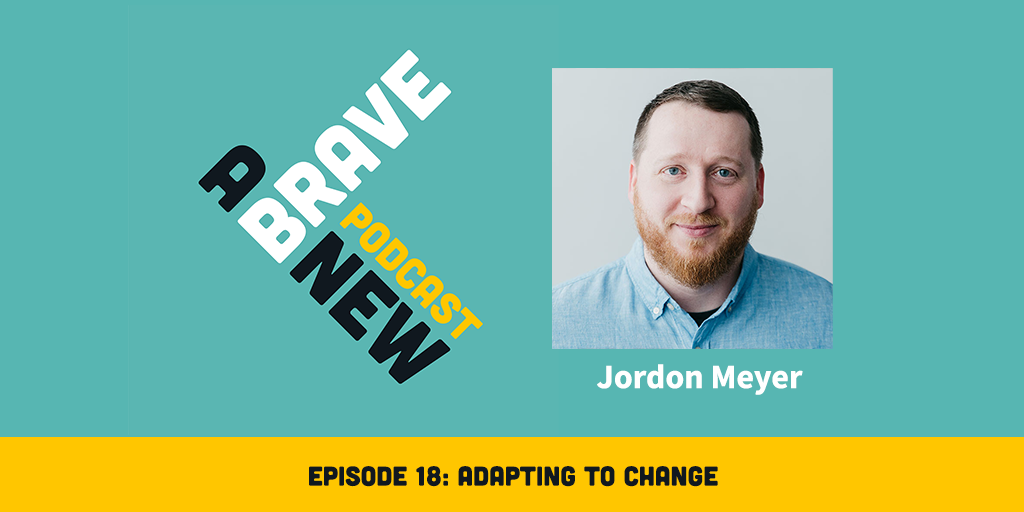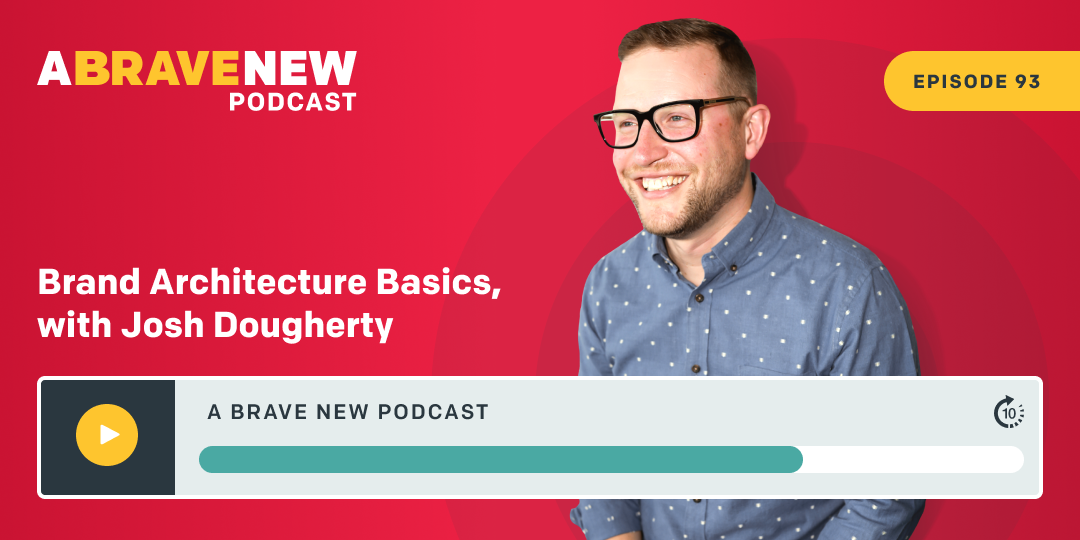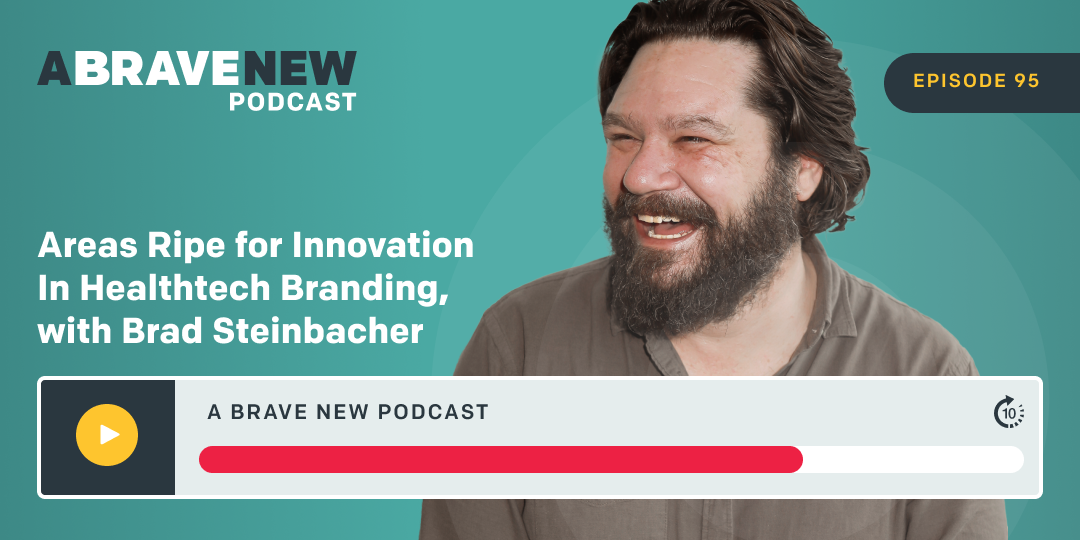Rachael Radford has supported organizations in software strategy, selection and implementation across North America. Rachael and her team sit alongside their clients as they evaluate software needs and options to ensure they make the best choice for their business. Rachael is passionate about knowledge transfer and ensures that clients walk away not only with a successful project, but with the tools and methodologies they need to make informed strategic decisions.
Her organization, Meira Consulting, is an independent software advisory firm. Clients work with Meira to evaluate systems and processes, build requirements, choose the right software, and manage the project to ensure technology goes live and meets the business need.
What you’ll learn about in this episode:
- Why companies struggle to choose the right software
- The downstream consequences of choosing the wrong software
- The intimate relationship between smart software selection, process design, and change management
- The fundamentals of a good software selection process
- How Meira Consulting helps companies large and small manage the software selection and implementation process
- Real life examples of the impact of a strategic software selection process
The first thing that someone should do when they start the software evaluation process
Additional resources:
- Rachael Radford on LinkedIn
- Meira Consulting’s Website
- Josh Dougherty on LinkedIn
- A Brave New’s Website
- Book Josh to Speak At Your Next Event
Transcript
Josh Dougherty:
Welcome to A Brave New Podcast. This is a show about branding and marketing, but more than that, it's an exploration of what it takes to create brands that will be remembered and how marketing can be a catalyst for those brands' success. I'm Josh Dougherty, your host. Let's dive in.
Hello and welcome to the show today. Really happy to have you along again. Today, we're going to take a little bit of a dive away from brand and marketing where we usually talk about and spend some time talking about technology and, specifically, how to select the right technology. I have with me today Rachael Radford from Meira Consulting. She's someone I've gotten to know over the last month and has really impressed me with her thoughtful approach to thinking through process and thinking through how technology enables those processes to run a better business. And the reason I'm talking about it on a podcast related to brand really is that technology and the way technology shows up in your business, the way that it allows you to facilitate the customer experience, the way it allows you to interact with the people that are most important to you as an organization and the way it allows you to build trust by mitigating risk are all really inherently tied to how do we build a strong brand for our organizations.
So without further ado, I'm going to welcome in Rachael. Rachael, it's so great to have you on the show today. Thanks for joining in.
Rachael Radford:
Yeah, happy to be here.
Josh Dougherty:
Awesome. Well, as we dive in, obviously we've gotten to know each other a little bit through some different events that we've been at and conversations we've had, but I'd love for you to have a chance to share your story a little bit with people. Tell them about your career and where it's taken you.
Rachael Radford:
So my career started in a bit of an odd way before getting into software consulting. Oddly enough, it started in the construction industry. So, I used to be a concrete form worker for high-rise towers, when I was very young. And that led me into managing construction projects. And a big part of managing construction projects is really making sure that you know everybody in the zoo and how to influence them to get something done. And that led into my first consulting gigs, which were really around helping municipal governments and crown corporations manage big infrastructure projects where they really struggled with that translation of what needs to happen in the field versus what some of the folks maybe at the head office are trying to accomplish and how do you get everybody on the same page.
So my career path, just in terms of getting into consulting, was a bit random. It came from literally boots-on-the-ground construction and then got into the project management side of things through that channel, which made for a lot of fun. And then I was a partner at a consulting firm with a couple of partners a long time ago, probably about 15 years ago, started up that business and left my portion of it seven years ago to start Meira, which is where I've been for the last seven years.
Josh Dougherty:
Nice. Let's talk a little bit about Meira then. What inspired you to get started? Obviously you're maybe looking for that next thing to do after you left the previous partnership you were a part of, but what were maybe the challenges in the market or the problems that you saw that needed to be solved that you thought you could uniquely solve?
Rachael Radford:
Yeah. I think in my former company, by the end of the time that I was there, we had started focusing really as a reseller of procurement-based software. So we had become the partner of a client that knew they wanted a source-to-pay software, which is really specific, somebody has to actually know that's what they're after. And we sold three specific ones out of the myriad that are available and then we did the implementation.
And for me, personally, it became very cookie cutter, which is boring. So I decided that I didn't want to do that for the rest of my life. And I also found, I think, the biggest gap that I saw on the client side was we weren't an unbiased solution, an agnostic partner to the clients. We couldn't, we were selling something.
And so, for clients, they want someone who's going to help them figure out what do I actually need? And which software out there, if there is a software, is actually going to meet the majority of that need? And really helping them figure that out as more of a client representative. And so that's what I started Meira based off of as I know a ton about software, so does my team. We also know a lot about process and operations.
And so, how do you think about what it is that we really need a software to accomplish in terms of our process, and in terms of our people, and in terms of what we're trying to do as an outcome? And then, what can software do to support that? So the work that we do at Meira is really as the client's rep in thinking through what software is going to actually make their business better, really going to make it better.
We're not just going to sell you a license to something you may or may not get value out of, but is there software that's really going to support their business? And that's what Meira was born out of was a real need we were coming to see in the market of just clients saying, “I know software can help my business, but I don't want somebody to just come and sell me every license under the sun for stuff I don't even know if I need. Can you help me figure out what software is actually going to make a positive difference and then manage that whole process? Because I don't have time for that. So that's really where it started.”
Josh Dougherty:
Yeah. I think that was one of the things that really attracted me to your business when we first started talking because even for us, we work with a couple types of software, and we are partners with that software and whenever someone's like, "Can you help me evaluate?" It's like I know one or two pieces of software really well and that's all I can really give you advice on. And it's not unbiased, as much as I try to be an unbiased consultant with people, it just isn't. And so I think that skill set—and that's one of the reasons I wanted to bring you on the podcast too, because I think this is something that in our space, in the health tech space and the technology space, it's funny companies that have a platform that they provide, they do technology every day and still struggle to choose the right pieces of technology to fuel their business. And so let's talk about that a little bit. Why do you think companies struggle so much with this?
Rachael Radford:
I think it starts with where the need is driven from. If one person in one department has a pain point and they're like, "I want to buy a software that's going to solve that for me." That's usually where most software purchases start. And I think that's where the challenge starts too, is when we think about software, there's almost no process in a business that doesn't touch another department. So anytime that you're going to go buy a software to deal with a process problem, which is usually where it starts from, it's like, "My department needs help from a software to do X." The challenge is it's not just your department that's going to be impacted by it and chances are it's not just your department that needs a piece of software that's going to solve this broader process problem. And so I think the challenge starts with a silo, going to buy a software without considering how great a software could be to support a bigger thing like the customer journey process instead of just the warehouse or inventory management process.
So I think that that's where the challenge starts, someone's identified a pain point, they're going to go find the software for that pain point, and then they go for it without necessarily knowing how that might impact other people or what other departments might actually already have a software that they could leverage and reduce costs. And thinking about it from that broader context. And I think a lot of people do that because they don't want to slow down. They have a problem, they want to solve it, they don't want bureaucracy to get in the way, they just want a solution. So they don't want to think about the broader piece because it's going to slow them down.
And I think that's where people, even if they know that this is going to maybe be a problem, they don't necessarily want to open up the floodgates, which I totally get too. And I think that that's where a party like ours that's a client rep can help with because we will make sure the right decision gets made for the betterment of the entire organization, and we can speed it up because we already know a lot about what's on the market, what does and doesn't play nicely together, all of that kind of stuff so we can help with that particular challenge that we see.
Josh Dougherty:
I think the connection you make with process is so important because it is, at the end of the day, someone in a department has tunnel vision on the things that they have to do to make their life easier or to focus on their KPIs, all that sort of stuff. And this is why process improvement fails often too because most people don't ... So I don't think it's that they don't care. I like to think people generally care, but they are concerned about how do they get through their day successfully. So adding additional things on is hard.
Rachael Radford:
Yes. Yeah, absolutely. And I think that's a big piece. A lot of our clients will say, "We know that we need X." Whether that's an enterprise resource planning or warehouse management or a customer relationship or an e-commerce tool, because they need to get there. Whatever it is that they want, I think the part is like, "Yeah, but I also have a full-time day job plus some. How am I going to do this off the side of my desk and make it happen?" And so if you layer on anything else, it can just seem overwhelming where it's like, "Oh, great, so now I have to document my processes, improve those processes, figure out requirements, go figure out the software that's going to actually do this while engaging with the other departments? Never going to happen."
So I totally get it. People are just like, "There's no way, I can't handle that." Because they have their day job and their whole team is probably slammed. So I think that it makes a lot of sense when you think about why so many software implementations don't, at the end of it, provide the value they're intended to is because there isn't that time to spend and the capacity to actually really think about what is the best way to pick the right software and update our processes so that they are lean and efficient and supported by software, that requires someone who knows how to do it and who has time. Which is usually where our client's just like, "Yeah, I know exactly how I would do this if I had all the time in the day, but I don't have that time."
Josh Dougherty:
Yeah. For sure. So we all are familiar, if you don't take that time or you perceive that that time isn't valuable enough to dedicate it, you make a quick decision. We know that there's the downstream consequences on budgets because you could have duplicative or technology solutions that are doing the same thing. But what else? What are some other common downstream consequences that people should be thinking about that may encourage them to stop, think for a moment, and make the investment of time and effort?
Rachael Radford:
When we think about the opportunity or risk with software, it shows up in three big areas as revenue, expense, and risk for the company. And where we see a lot of lost opportunity in the way that software can be leveraged is in areas of risks. So when we think about picking the software that has the right data residency or has really good security or has appropriate integration with the other software, there's risk that you just wouldn't know about it unless you knew to think about it. And so there can be a lot of risk introduced with software if we're not picking the right one, we don't have the right contract with the implementation vendor around things as deep as data residency. There's a lot of risk that is there that people just probably aren't aware of until something happens and it is so bad.
So I think you're not going to even notice that it's a problem until it's such a big problem that you can't think about anything else. So it's really trying to get ahead of the risk area. But what more commonly is seen is area of expense. So if you don't pick the right software, you've got licenses that you've purchased that are redundant and you probably signed a three to five year contract, which means it's not like you can just drop the cost. So it's expensive for a long time not just on the licensing side, but also the implementation costs can be huge, especially if you get it wrong. Not just on the vendor, but your time, the time that staff have spent trying to help design the system, trying to test the system, trying to train on the system only for people to not use it because it's not right or it's not effective or it's not something that they were trained on adequately.
There's just so much cost inherent in the business if we get it wrong. But on the revenue side, and I think that this is where we often miss the opportunity with software as it can be a revenue-generating opportunity if we are picking it and implementing it with a customer journey in mind. Because if we think about what a software can do to promote a customer having a really beautiful experience from the point in which they identify they have a need and you are tracking that opportunity and you're responding to them effectively and then you're delivering on what you said you would deliver on. And software can support that if you think about it in the context of customer journey instead of just in the context of your own internal operations. And I think we miss that opportunity a lot of the time with software just because you've got to flip it on its head a little bit.
Josh Dougherty:
Yeah. I think that's a really beautiful connection to this area that I work in a lot, which is brand. Because if you're thinking about a customer journey, it's how do I provide something that stays true to my brand? And good technology should allow you to do that, right?
Rachael Radford:
Yes. In a really great way. The way that you can interact with a customer, if you have really efficient processes supported by software, you can have a good service level agreement with them. You can get back to them with accurate information quickly. You can tell them where their product is, where their service is at, or they can just have access to that information. You can just make it such a positive experience for your customers and make it a positive experience for your staff if you have good software that's supporting. So it can be great if you can get it right.
Josh Dougherty:
Yeah. I think another thing that just clicked with me when you were talking was this area of risk. And I was thinking of here in the US we had this massive UnitedHealthcare data breach that happened. And this is an example of risk gone awry. And it doesn't matter any of the work that they've done to build trust, build relationships, or any of that stuff, because the risk wasn't mitigated. I'm not saying that they didn't do their best to do it. I don't know enough about the details about this whole situation and cybersecurity is a whole separate thing. But it is just an object lesson. I think that risk isn't there until it shows up.
Rachael Radford:
Yes.
Josh Dougherty:
Or the consequences of risk aren't there until it shows up. The risk is probably always there.
Rachael Radford:
Yeah, it's under the water. You're looking out at the lake, it's looking all glossy, it's gorgeous. You jump in the lake and Loch Ness is there. There's the monster in the water, right?
Josh Dougherty:
Totally.
Rachael Radford:
But you just don't see. And we work with enterprise organizations, smaller organizations, we work with municipal governments and state governments, and we work with everybody because the methodology we use always holds true. But one thing that we found really interesting in working in government organizations is this conversation around business continuity. So if you are going to have an event, whether that's physical or cybersecurity or whatever it is, how do you prepare for that?
And there's a lot, especially in the software realm, that you can do to prepare for the events that are likely to happen, like a cybersecurity breach. You can't always stop it, but you can figure out how am I going to identify that it happened? When it happens, what am I going to do? And once it's over, and this is the part a lot of companies miss, once the event has been resolved, how do I get all the data that was happening outside of the system during the breach back into it so I can start operating again? And there's a lot that you can do to prepare for that too if you, again, can carve out the capacity to think through it.
Josh Dougherty:
Totally. That makes a lot of sense. Well, let's dive into talking a little bit about the process first, selecting technology in a smart way. What would you say when you're talking to your clients, what are those fundamentals of a good technology selection process that you want them to be thinking about?
Rachael Radford:
Yeah. There's a really great diagram we have, which I know we can't share on an audio podcast, but we have a really great diagram that speaks to this. And if anybody ever wants it, they can reach out to me. But when we're thinking about what really good selection looks like, I think it's starting with, okay, what is a very high-level map of all the different processes in our different department areas? And of those processes, which ones do we want this software to support? And then within those processes, what exactly are we expecting the software to do for us? Because if you can get even just that high-level summary together, then you can start saying, "Okay, now we can start thinking about what kind of software is going to do this kind of thing."
And then if you start shortlisting that software, you can start saying, "Hey, these are the things that are unique scenarios we want this software to do for us or to support in these kinds of ways." You can say to the vendors, "Can you do it or not? Can you show us in a demo that you can actually do this thing, this specific scenario in our business that we need you to do?" And it's so much easier to translate over instead of trying to put together a list of 400 requirements, you're never going to get them all clear and you're not always going to translate them. But this allows you to say in your own language as a business, what is it that we want this to accomplish and support, in our business language, for us in a way that the vendor of a software can really say, "Let me show you in a demo how we would accomplish this for you."
And it just means that you can get clear internally, most importantly, about what it is you want and get buy-in across everybody that wants to buy this thing inside, what is it that we really want? And then it's easier for the vendor to understand what it is you're trying to accomplish and then prove it to you, not just say yes, I can do that—
but actually prove to you that they can in a demo situation. So I think that that process of just having that step back, think about it inside the organization, really what are we intending the outcome of this to be for us? Then the vendor can say, I can do it or I can't.
And if they say they can do it, at least you have something to hold them to if then they turn around and say, "Oh mate, that's not really." Because you have had that conversation, you have some documentation around, you've gotten people on the same page about it. And then you have something to actually go to market with instead of just starting to, whether it's search, what are ERPs? And then you start picking stuff that hopefully is the right thing. It really arms you with more that you can share and speak to when you start reaching out to vendors and get it right.
Josh Dougherty:
I think the “show it” point is so important because I’ve worked with so many sales people where they say yes to everything until even implementation. It is really good advice that people could just take away if they haven't done a lot of this work on their own. So those are the fundamentals. If someone was looking to work with your team to go through that process and maybe they have a group of stakeholders they're working with or whatever, how do you help guide people through that process?
Rachael Radford:
Yeah. We can tailor it depending on how much client capacity there is and the skill set and what they want to take on. For a lot of our clients, they want us to do as much of this as possible so that it moves. So what that can look like, and it can get pared down if somebody does have internal resources, but if they don't, usually it looks like we're going to help map out what are the processes that are going to live in this system? What's the current state? What's the challenge? What's the intended future state? That's the most important thing. We don't want to just put what we're currently doing in a shinier system, we want better process outcomes out of this.
So we'll map that all out, we'll flush out the requirements with them, we flush out the scenarios, and then we'll take it out there and say, okay, out of thousands of pieces of software that are there, which are the two or three that can actually do this? That are in a price point that makes sense for the size of business that we're representing and all of those pieces. And really thinking about what can a software accomplish realistically? Because we can get in a trap with software, especially if we're being sold to, that the software is a magic bullet and it is absolutely not. It's going to do like 80% of what you would like it to do and not the other 20%. Unless you're spending scads of money and even then it's only going to get to 90%. So it's really about being realistic about what can it do within a reasonable budget. And so we will figure all of that piece out and really understanding the software that's out there, figuring out the right software.
And then the second piece, figuring out who's the right implementation partner? Because you can pick the right software, and that's usually not the challenge, it's picking the right implementation partner or bar to really make it. Because that's the person that you're going to have the long-term relationship with. That's the team you're going to be stuck to for hopefully 10, 15, 20 years if you pick the right software for your business. So helping them pick that right partner to negotiate the contracts with them, making sure that they have thought about all the different ramifications of what they're about to sign and getting that in order for them.
So we go from start to finish when it comes to selection with a client. And then most of our clients also want us to manage the entire implementation on their behalf. So we're acting as their project management, their change management, their BA team, training their staff along the way so that at the end of it, when they post go live, they have an internal owner of that system, an administrator of that system that owns all the information that we have created along the way so that it doesn't leave with anybody. And then post go live, we also support clients in, you have this beautiful new system, you finally have good clean data, what should you be doing with it? How do you get it into good reports and dashboards to make good business decisions based off of? And we'll lead that too if they need that support on the back end of a go live.
Josh Dougherty:
Smart. That's awesome. I think this is often expressed in stories best. So I think you've described this wonderful arc that I know many people wish, yeah, I wish I had someone dedicated who could help me do that work. Can you share maybe a story? I know some of them probably are confidential, but are there any stories that you can share about a customer and the impact that you had for them?
Rachael Radford:
I won't name names, but I can tell about a couple of interesting pieces where having a second brain that can act on your behalf can be really powerful. And some of them are about getting out of a pickle. Some of them are about having a really beautiful end result. And sometimes it's both. So one of our clients came to us and said, "You know what? We bought it. We bought an ERP system three years ago, we're still not live. And we have a lot of concerns about going live with this, which is why we haven't. And we don't know what to do. What do we do?" And we face that situation—
Josh Dougherty:
Big questions, right?
Rachael Radford:
Big questions. What do we do? So we did a quick assessment on their requirements, on what they purchased, on the way that it had been implemented so far. And we've done this kind of project with several clients and sometimes the outcome of that assessment is you have the right product, it hasn't been implemented in the way that best serves your organization. So it's an implementation problem. So you're going to go correct that and then you can get to go live. In one instance, it was the wrong product.
Josh Dougherty:
Oh my gosh.
Rachael Radford:
And just a product that will not be able to meet their needs based on their industry. And so we helped them negotiate out of the deal with the platform vendor and then helped them reset expectations in their organization. And it's a big change management piece to say, "Hey, we invested all this money in something and we're not going to go live with it." How do you communicate that to your board? How do you communicate that to your staff? And then what do you do next? So we helped them with that change management and communications. And then helped them come up with a new software strategy that was going to serve them and make the pitch to the board to say, "We're going to get it right this time." Because you obviously have a challenge there in how it's viewed.
So we do a lot of rescue projects. So that's an example of how we're helping get out of a risky and bad situation and then, okay, let's reset the baseline and then do better next time. But most of our projects are really, one of our clients is a private equity company. They own 120 brands across North America and they had a subset of brands that they had recently acquired, there were seven of them that they wanted to amalgamate to show up as one company but still have separate layers of books. And they wanted to be able to start piling them together so that eventually they could put it on public market.
And so for that one, we helped them identify these seven businesses that they had purchased had nuances to them that were legitimate and really needed to stay unique to them to serve the market and to be their differentiator. And there's a bunch of stuff that did not need to be different for each one. So it was really about saying, "Okay, this is a product that's going to meet all seven requirements for all seven entities still rolling up into really easy-to-read, seamless, one dashboard and report model so that you could read them separately and together." And then had to redesign the processes so that everything was standardized where it could be. And put in place a product that had that support and standardization, retraining staff across all seven entities to get on board with a new way, which was really fun.
And now those seven entities are all on a new ERP system. One of them that really needed it has their own manufacturing software that plays really nicely with that ERP system. There's roll up reporting that the private equity firm knows what's happening in the individual and as the whole. And it's been a really significant game because they were able to put in place a shared services model so that instead of each of the seven entities having their own administrative teams, they actually have a pooled group now that can support the entire. And that reduced expense. It also makes accurate reporting.
Josh Dougherty:
Totally.
Rachael Radford:
You've got that standard in place. So it can be a really wonderful thing. It can't be done just as a software though. It really has to be done in tandem with people and process in order for it to really function as a whole.
Josh Dougherty:
Yeah. How long does a project like that take? What was the timeframe for that?
Rachael Radford:
For seven entities at a private equity where you're doing complete changeover is an 18 to 24 month process. When we're at one organization, you can select a new system within two to three months and you can implement it in nine to 12. Sometimes less, it really depends on how complex the organization is and the cleanliness of their data and how much needs to get ported over and lots of little bits in there. But it really depends on what they're trying to accomplish and how big of a difference is it meant to be compared to today.
Josh Dougherty:
Yeah. So something that keeps going around in my mind as you're describing these instances and the different problems you're solving is how amazing it is, I think, that you guys are software agnostic because there's a lot to keep track of in different industries, different requirements. So what are you and your team doing to stay up to speed on changes? Obviously there are big players in the ERP market and everything, so those don't shift as much, but there is a lot of flux that happens in the software and technology industries. So how do you stay up to speed on things?
Rachael Radford:
All the time. It's a daily effort across everybody on the team, for sure. A couple of things we found really helpful is we have quarterly touch points with a lot of the major platform providers and then a bunch of the implementation vendors that we've seen really great work out of in the past. And those quarterly touch points, everybody on the team participates with different vendors on it so that we can collect information about what is different about the latest releases in the software? What are the different applications that you now have integrations with? What are some of the projects you've completed that had different software on it? And how did that go? So we get a lot of intel direct from the software providers themselves about just what are some of the changes in the application. But there's also a lot of really great information online that you can scrape too just to understand what are the different APIs that are out there that let one software play nicely with another one? And what are some of the new ones that are out there? And who bought who? There's a lot of that.
And I think if you start with some of the products that are out there on the market that they have been around for long enough that you have some confidence that people have used it and worked out the kinks and that have been continuously invested in. So it's not like there's no SaaS solution for it, it's only on-prem. That's a flag. That doesn't mean they're investing in the right area. So there's a lot of research that we're constantly doing. And then our team is also always having to share that information. Because every project that we're touching, we're all on different ones and we're all on several, is bringing it back to the team to say, "Hey, we just hit a snag with this payroll system. Turns out it doesn't do what they said it could do. It doesn't do this part around how it manages union fees and things like that." Really weird little nuance bits we just have to share across the team to also know what's really happening.
Josh Dougherty:
Makes total sense. Yeah, it's just interesting. And I expected this, it comes from multiple facets because stuff is changing so quickly, it has to come from everywhere. So as we wrap up this conversation, I wanted to ask about if someone's about to start this type of process, even if they've been through it before. As someone who's doing this every day, you have a team that's working across multiple industries, multiple different clients. What's the first thing that they should do as they're contemplating a project like this?
Rachael Radford:
Yeah. I think the first part would be to get a whiteboard and a couple hours and pull in some folks that are, if you know right out of the gate, this software is going to touch these departments, we're expecting them to use it. Pull one person in who actually performs the work from each of those departments. Get them in a room together for a couple hours and just say, "Hey, okay, these are all the departments in our company. These are all of the departments we think might use this software. What are the processes that we would like this to support?"
And just start spitballing even just there to say, these are the processes in our company that we want this to support, and what do we want it to do? Give me a story. Give a story with a couple bullet points on we want the software to do X, Y, and Z for us. Or I want to go in there, I want to see this information. I want to be able to send out a quote. I want to be able to see somebody verify that the quote is okay for me to send out. I want to send it to the client. I want to see that they saw it. I want to see that they read it. I want to see that they commented back and said yes or no or whatever it is.
But if you just talk about it as a story that will tell you what your requirements are, that will tell you at least the information to start sharing with vendors for them to respond to. And just carving out even the two hours or an hour, if that's all you can do, but get a whiteboard and get some people together and start writing out what is it we're expecting this to do for us? And if you start there, you're much less likely to go search, see a bunch of software, start clicking buttons, start getting salespeople calling you, and then you're down a rabbit hole that you never maybe meant to go down. So I'd start there.
Josh Dougherty:
Absolutely. Awesome. Well, this has been a great conversation. I want to wrap it up here because I think if I asked you what the one thing people should remember, it's that it would be something around technology being an enabler of process and not the other way around, from our conversation. Would that be true?
Rachael Radford:
Absolutely, Josh. Yes.
Josh Dougherty:
So as we wrap, I'm sure some people are going to be interested in maybe learning more about this. How can people connect with you, keep up with the work that you're doing and if they want to talk to you about doing a project, get in touch?
Rachael Radford:
Yeah. A couple of ways. I think our website has a link right on it to get time on my calendar. So that's an easy way. And then our LinkedIn, we do post conferences that we're speaking at, new information that's coming to light for us and share lots of information about what we know is going on in the market there. So they can find us at meiraconsulting.com, which is M-E-I-R-A, which I know always trips people up, but Meira Consulting either on LinkedIn or our website, I think is the easiest way.
Josh Dougherty:
Perfect. We'll put those in the show notes as well, so people can just click easily if they don't want to remember how to spell. And yeah, we'll go from there. Thanks so much for the conversation today. It's been a rich exploration in a really important area for many businesses.
Rachael Radford:
Yeah. Happy to be here, Josh. Thank you for having me.
Josh Dougherty:
Thanks for listening to this episode of A Brave New Podcast. Go to abravenew.com for more resources and advice on all things brand and marketing. If you enjoyed this episode, show us some love by subscribing, rating, and reviewing A Brave New Podcast wherever you listen to your podcasts. A Brave New Podcast is created by A Brave New, a brand and marketing agency in Seattle, Washington. Our producer is Rob Gregerson of Legato Productions.
Similar Articles
OCT 11, 2021

The Beginner’s Guide to Generating Inbound Leads
Marketing doesn’t have to be painfully intrusive, like getting yet another telemarketing call right when you sit down to dinner with your family.
OCT 11, 2021

The Beginner’s Guide to Generating Inbound Leads
Marketing doesn’t have to be painfully intrusive, like getting yet another telemarketing call right when you sit down to dinner with your family.

